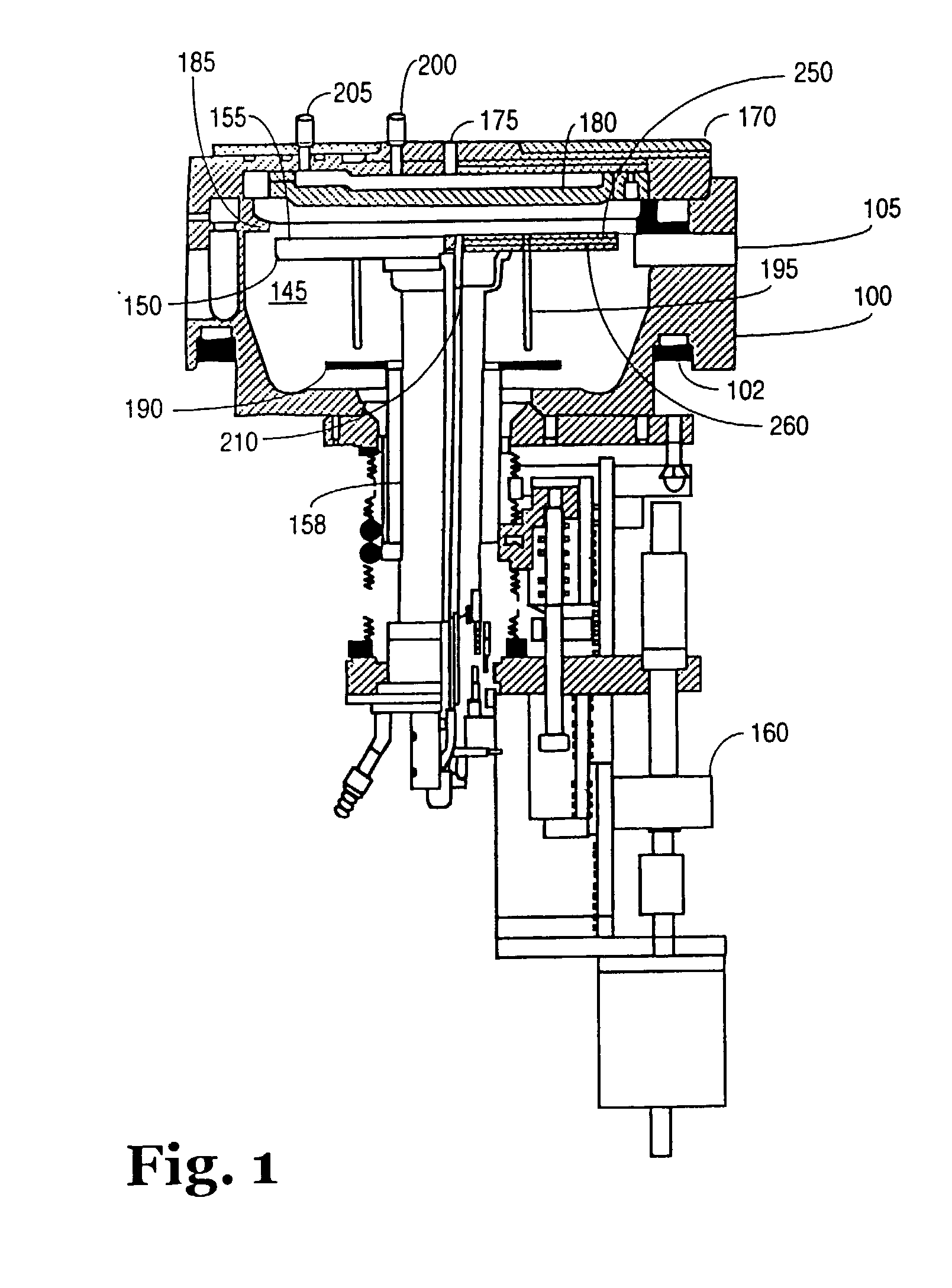Multi-zone resistive heater
a resistive heater and multi-zone technology, applied in the field of multi-zone resistive heaters, can solve the problems of difficult control of the temperature in the chamber, difficulty in uniform temperature, and single-zone resistive heaters not having the ability to compensate for differences
- Summary
- Abstract
- Description
- Claims
- Application Information
AI Technical Summary
Problems solved by technology
Method used
Image
Examples
Embodiment Construction
[0152] (Inner) Heater PID Voltage=(49.1%+3.4%+3.0%+0%-2.0%=53.5%=>107 VAC
[0153] Feedforward leg=750*(0.655 / (2000+2000*2 2)=>49.1%*
[0154] P leg=0.8*(142.7*30 / (2000+2000*2 2)=>3.4%
[0155] (Outer) Heater Voltage=1.15*107=>123VAC
[0156] Power Ratio=1.5 *Note: Arrows in calculations indicate that the calculated value shown is different in magnitude by a factor of 10.sup.x.
3TABLE 3 Heater Parameter Description--PID Control Chamber X watts of power at maximum Inner analog output (maximum Watts of Inner) Description: Used as a gain factor in calculations for Feedforward leg, P leg, I leg, D leg, and Temp Preset leg. Chamber X watts of power at maximum Outer analog output (Maximum Watts of Outer) Description: Used as a gain factor in calculations for Feedforward leg, P leg, I leg, D leg, and Temp Preset leg. Chamber X resistive heater servo band width Description: Temperature band around setpoint within which integral control is used. Integral control is reset every time temperature is outside...
PUM
 Login to View More
Login to View More Abstract
Description
Claims
Application Information
 Login to View More
Login to View More - R&D
- Intellectual Property
- Life Sciences
- Materials
- Tech Scout
- Unparalleled Data Quality
- Higher Quality Content
- 60% Fewer Hallucinations
Browse by: Latest US Patents, China's latest patents, Technical Efficacy Thesaurus, Application Domain, Technology Topic, Popular Technical Reports.
© 2025 PatSnap. All rights reserved.Legal|Privacy policy|Modern Slavery Act Transparency Statement|Sitemap|About US| Contact US: help@patsnap.com



